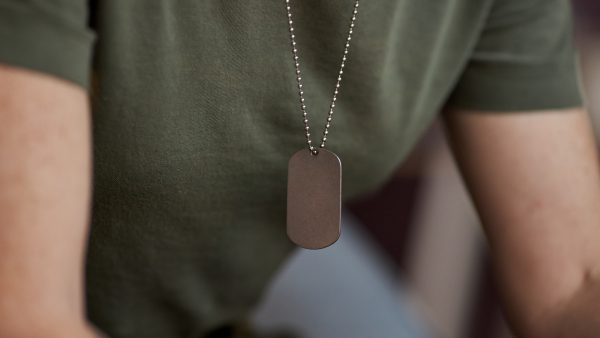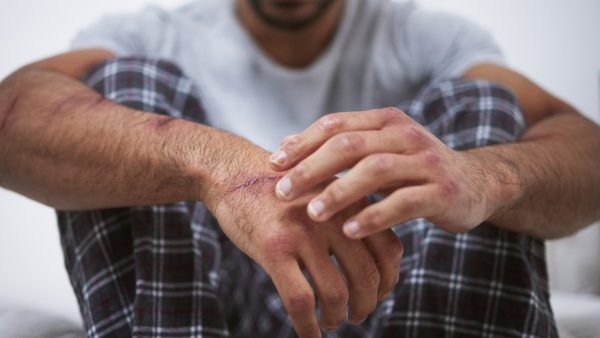Looking for Expert-Level VA Claim Answers?📱Call Us Now! 737-295-2226
You served your country and put your life on the line, but when it comes to getting help from the VA for post-traumatic stress disorder (PTSD), you feel like you don’t deserve it. You weren’t in combat, so how can you have non-combat PTSD?
But veterans who experience trauma outside of combat while serving can also develop PTSD. We call this non-combat PTSD.
In this post, we discuss eight reasons why you deserve a non-combat PTSD rating from the VA. Read on to learn all about non-combat PTSD, including tips on how to claim a non-combat PTSD rating from the VA and what to expect during the VA claim process.

- What is PTSD?
- 1. PTSD isn’t just caused by combat – many other factors can cause PTSD
- 2. You’re Dealing with Symptoms of PTSD
- 3. You Served your Country Honorably and Courageously
- 4. The VA Rates Veterans Like You for Non-Combat PTSD
- 5. You’ve Already Sacrificed Much for our Country
- 6. A Non-Combat PTSD Rating Opens You Up to Additional Benefits
- 7. Veterans with Non-Combat PTSD are Just as Deserving of Help as Combat Veterans
- 8. You’re Not Alone! Get the Benefits You Deserve
- About the Author
You DESERVE a HIGHER VA rating.
Take advantage of a VA Claim Discovery Call with an experienced Team Member. Learn what you’ve been missing so you can FINALLY get the disability rating and compensation you’ve earned for your service.
What is PTSD?
PTSD is a mental health condition that can occur after a person experiences or witnesses a traumatic event. Over 1 million veterans have a VA disability rating for PTSD. PTSD can also develop in veterans who have been exposed to traumatic events during their service, even if they weren’t in combat.
A traumatic event that results in the development of PTSD is called a “stressor.” While most people associate PTSD with combat, any type of stressor can cause PTSD. PTSD is broken into two categories within the VA: combat and non-combat.
Regardless of which category you fall into, If you have PTSD, your life may look very different than it did before the trauma occurred. You may find yourself struggling to cope with everyday activities.
This article focuses on the lesser-known of the two but equally important non-combat PTSD. You may have experienced trauma during your service, and you shouldn’t have to suffer in silence. A non-combat PTSD rating can help you get the benefits and treatment you need to move on with your life.
1. PTSD isn’t just caused by combat – many other factors can cause PTSD
What is non-combat PTSD?
Non-combat PTSD is a mental health condition that has occurred due to any trauma other than combat.
Non-combat PTSD is often overlooked because people assume that only combat veterans can develop the condition. Typically, the assumption is that a veteran develops PTSD due to exposure to hostile military or terrorist activity.
Many veterans don’t even realize they have PTSD until years after leaving the military. Even if you didn’t serve in combat, you could still have PTSD from your time in the military.
Non-Combat PTSD Stressor Examples
There are many different traumatic events (or stressors) veterans experience outside of combat. Any type of trauma can cause PTSD. Some common examples of traumatic events that can lead to non-combat PTSD include:
- Witnessing injury or death, not due to the enemy
- Training accidents
- Experiencing hazing or physical assault during military service
- Witnessing a traumatic event while on active duty
- Being the victim of military sexual assault or harassment while in the military
- Losing a fellow service member to suicide
- Duty in a burn ward or mortuary
- Experiencing (or witnessing) car accidents, aircraft crashes, or sinking ships
This list isn’t all-inclusive. If you have experienced any type of trauma, you could be at risk for PTSD.
You don’t have to be in combat to develop PTSD, don’t let anyone tell you otherwise.
2. You’re Dealing with Symptoms of PTSD
Non-combat PTSD can cause various physical, emotional, and behavioral symptoms, just like combat PTSD.
Many veterans with non-combat PTSD experience symptoms of anxiety and depression, which can make it difficult to function in day-to-day life. It’s not unusual for people with non-combat PTSD to turn to substance abuse in an attempt to self-medicate.
Experiencing non-combat PTSD can also take a toll on your relationships. It’s not uncommon for people with PTSD to withdraw from friends and family or have difficulty maintaining close relationships.
Everyone who experiences trauma processes the experience differently. Symptoms manifest differently in each person experiencing non-combat PTSD. While non-combat PTSD stressors may seem less severe than combat stressors, there’s virtually no difference in the way symptoms manifest.
Common symptoms of non-combat PTSD include:
- Intrusive thoughts or memories of the trauma
- Flashbacks
- Nightmares
- Avoidance of places or things that remind you of the trauma
- Anxiety and fear
- Guilt and shame
- Depression
- Substance abuse
- Difficulty sleeping
- Anger and irritability
- Relationship problems
These symptoms can make it hard for veterans to keep a job, maintain healthy relationships, and take care of their physical health.
3. You Served your Country Honorably and Courageously
Veterans with non-combat PTSD often feel like they don’t deserve help because their experience wasn’t as “bad” as those who served in combat, but that is not the case.
You served your country honorably, and you deserve to get the help you need. Your service is no less valuable than that of a veteran dealing with combat PTSD, and you deserve the same recognition, support, and benefits.
4. The VA Rates Veterans Like You for Non-Combat PTSD
Veterans dealing with non-combat PTSD often feel like they don’t deserve a VA rating because their trauma wasn’t caused by combat. This couldn’t be further from the truth! The VA rates veterans for non-combat PTSD just like they do for combat PTSD.
Thousands of veterans have a non-combat PTSD VA rating. This number is likely even higher as many veterans don’t seek treatment for their PTSD.
There are six non-combat PTSD VA ratings: 0, 10, 30, 50, 70, and 100 percent. The level of disability awarded is based on the severity of your symptoms.
How the VA Rates Non-Combat PTSD
The VA rates non-combat PTSD with the same criteria it uses for many different mental disorders. Below we list how the VA rates veterans so you can see what type of rating you may be eligible for.
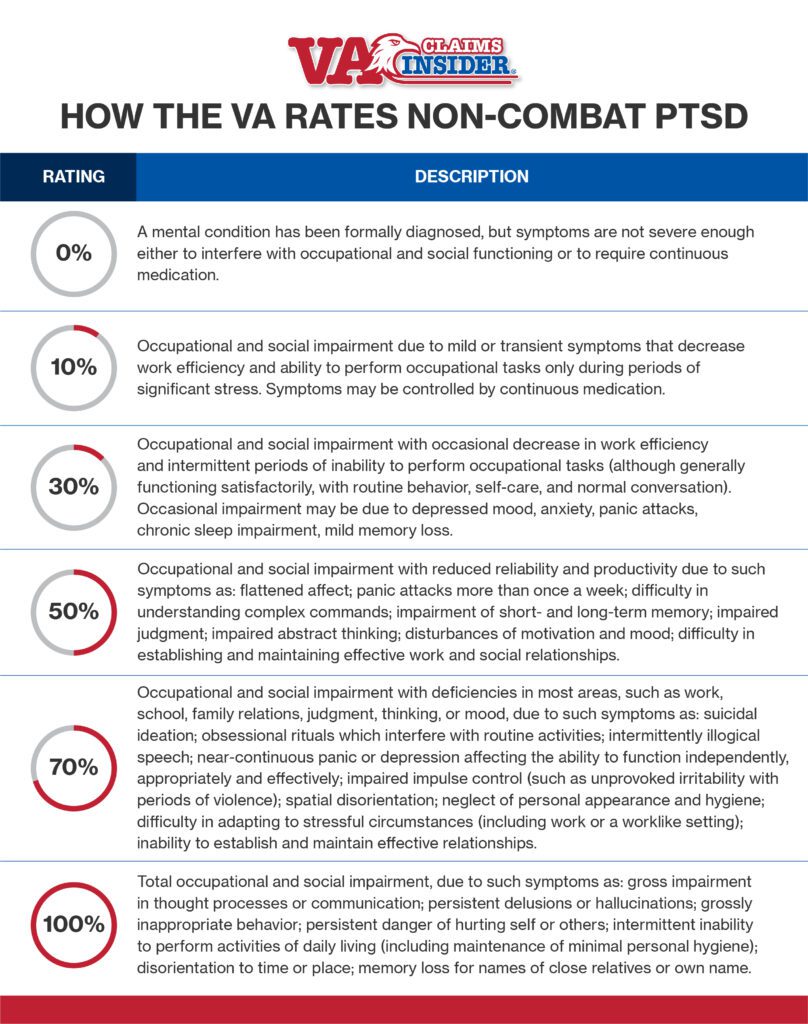
0 Percent Rating
If you’re diagnosed with PTSD, but your symptoms aren’t severe enough to interfere with your life or require medication, you’ll likely receive a 0 percent rating.
10 Percent Rating
If you have mild symptoms and only periods of high stress impact your day-to-day life, you may be granted a 10 percent rating. If your symptoms can be controlled by continuous medication, you may also fall under this rating.
30 Percent Rating
If you have symptoms that occasionally interfere with your ability to work or socialize, you may receive a 30 percent rating. In general, you’re still capable of maintaining self-care, normal conversation, and routine behavior at this rating percentage. Symptoms for a 30 percent rating can include:
- Depression
- Anxiety
- Suspiciousness
- Panic attacks (weekly or less often)
- Chronic sleep impairment,
- Mild memory loss (such as forgetting names, directions, or recent events)
50 Percent Rating
If your symptoms reduce your reliability and productivity, you may receive a 50 percent rating. Symptoms for a 50 percent rating can include:
- Using speech that is not direct, using a lot of words to say something, or relying on clichés or common phrases
- Experiencing panic attacks more than once a week
- Being unable to understand complex commands
- Forgetting things often or forgetting to complete tasks
- Impaired judgment
- Difficulty thinking abstractly
- Trouble with motivation and mood
- Issues with maintaining work and social relationships
Automatic 50 Percent Non-Combat PTSD VA Rating
If your non-combat PTSD develops while you’re serving on active duty and you’re discharged as a result of your condition, you’ll automatically be granted a minimum 50 percent VA rating. This rating will continue for six months after your discharge, at which point it will be re-evaluated.
70 Percent Rating
If you have symptoms that often interfere with your ability to work, go to school, socialize, and impact your judgment and mood, you may receive a 70 percent rating. Symptoms for a 70 percent PTSD rating can include:
- Having suicidal thoughts
- Being preoccupied with obsessive rituals that interfere with everyday activities
- Speaking in a way that is illogical, unclear, or irrelevant at times
- Experiencing near-continuous panic or depression that affects your ability to function independently and effectively
- Struggling to control impulses like irritability or violence, or becoming easily confused and disoriented
- Neglecting personal appearance and hygiene
- Having difficulty adjusting to stressful situations
- Being unable to maintain healthy relationships
100 Percent Rating
The highest VA rating for non-combat PTSD is 100 percent. To qualify, veterans must demonstrate complete occupational and social impairment due to symptoms such as:
- Having significant trouble thinking or communicating
- Seeing or hearing things that aren’t there constantly
- Behaving extremely inappropriately
- The constant danger of harming yourself or others
- Often unable to do everyday activities like taking care of personal hygiene
- Becoming confused about time and place
- Forgetting the names of close relatives, what you do for work, or your own name
5. You’ve Already Sacrificed Much for our Country
The sacrifices you’ve made for our country will never be forgotten. Don’t sacrifice your mental health.
The VA provides a variety of services and benefits to help veterans cope with the symptoms of non-combat PTSD.
If you or someone you know is struggling with non-combat PTSD, resources are available to help. The National Center for PTSD has information and resources available to all veterans.
The Veterans Crisis Line is also an excellent resource for veterans who are struggling with mental health issues. The Veterans Crisis Line is confidential and available 24/7. Veterans can call the Veterans Crisis Line at 1-800-273-8255.
If you’re a veteran struggling with non-combat PTSD, know that you are not alone. There are resources available and people who care about you and want to help. You deserve to get the treatment and support you need; seek help today.

6. A Non-Combat PTSD Rating Opens You Up to Additional Benefits
Once you have a VA rating, there are a number of benefits available to veterans dealing with non-combat PTSD. These benefits range from health care and education benefits to vocational rehabilitation.
Health care benefits are among the most important benefits available to veterans dealing with non-combat PTSD. The VA provides a variety of health care services specifically designed to help you cope with the symptoms of PTSD, including mental health counseling, medication, and more.
However, the benefits extend beyond healthcare. Veterans with non-combat PTSD are eligible for a number of education and job training programs. These programs can help veterans transition to civilian life and find stable, meaningful employment.
In addition, veterans with non-combat PTSD may also be eligible for a Total Disability Individual Unemployability (TDIU) rating if they aren’t rated at 100 percent but have difficulty maintaining employment.
7. Veterans with Non-Combat PTSD are Just as Deserving of Help as Combat Veterans
Whether you experienced your trauma in combat or not, you deserve help and support. Remember, service-connected non-combat PTSD can occur after any type of in-service stressor.
PTSD can be an isolating condition, but you don’t have to suffer alone. There are many resources available to help you cope with PTSD.
If you think you might have PTSD, it’s important to seek professional help. A mental health professional can diagnose PTSD and develop a treatment plan to help you manage your symptoms.
Don’t hesitate to reach out for help if you’re struggling. Veterans with non-combat PTSD deserve support and treatment just like any other veteran.
8. You’re Not Alone! Get the Benefits You Deserve
The first step to managing your symptoms is reaching out to a mental health professional who can diagnose your condition and start you on the path to getting the help you earned.
How to File a Claim for Non-Combat PTSD with the VA
You need three things to file a successful claim with the VA for non-combat PTSD:
- Credible evidence that the in-service stressor happened
- A PTSD diagnosis
- A link, or medical nexus, between your symptoms and the in-service stressor
Credible Evidence
When filing a claim, the first step is to gather all necessary documentation. If you were diagnosed with PTSD in-service, you don’t need credible evidence of the event as long as your non-combat stressor is related to your service.
Your testimony alone is enough to establish a service connection and prove that an in-service stressor happened. However, if you can provide additional evidence indicating you were in the area when the event occurred or the evidence supports the description of the event, this is also credible evidence.
It may be helpful to have other service members submit a written buddy statement confirming the facts of the incident when filing your claim for non-combat PTSD.
Filing a claim for PTSD can be daunting, but we’re here to help.
A PTSD Diagnosis
You will need to provide the VA with evidence of your PTSD diagnosis. If you think you may have PTSD but haven’t gone to see a doctor yet and been diagnosed, it’s important to do that as soon as possible.
The Nexus Between Your Non-Combat PTSD and Stressor
In order to establish service connection for non-combat PTSD, you will need to show a link, or nexus, between your symptoms and the in-service stressor.
This can be done:
- With a medical opinion from a qualified mental health professional that states it is at least as likely as not (50% or greater chance) that your PTSD is related to the in-service stressor. OR
- With lay evidence, which is evidence from people who knew you before and after service, that describes how your symptoms started after the in-service event and how they have changed since then.
If you’re a veteran suffering from non-combat PTSD, know that you are not alone. Veterans who receive treatment for PTSD have a much higher quality of life than those who don’t. Seek treatment and claim the benefits you deserve, you’ve earned them.
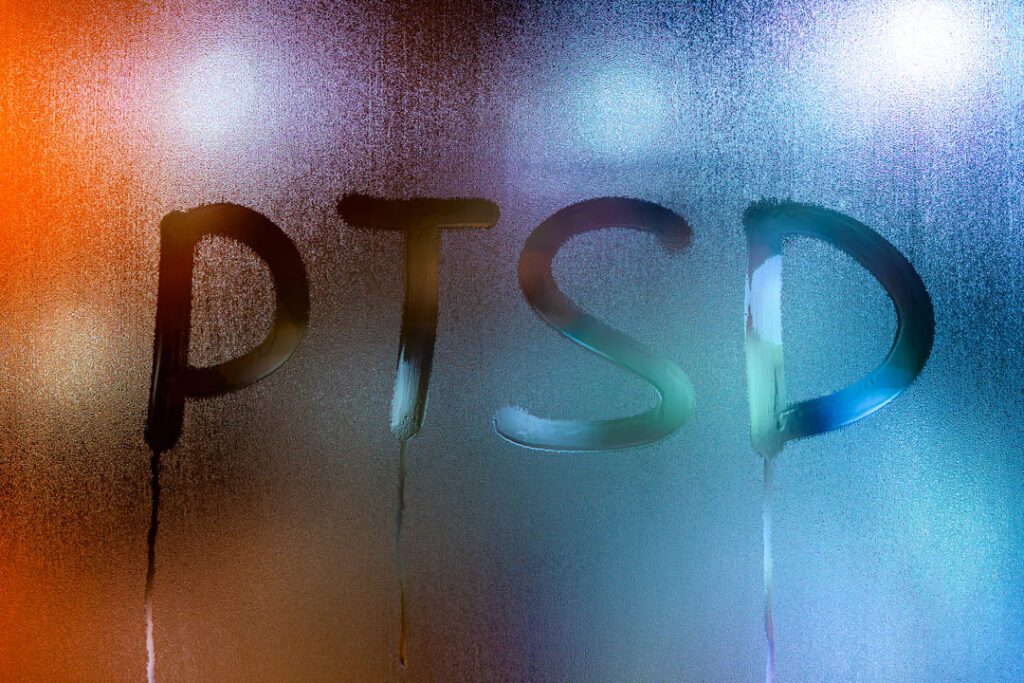
NEED MORE ASSISTANCE?
Most veterans are underrated for their disabilities and therefore not getting the compensation they’re due. At VA Claims Insider, we help you understand and take control of the claims process, so you can get the rating and compensation you’re owed by law.
Our process takes the guesswork out of filing a VA disability claim and supports you every step of the way in building a fully-developed claim (FDC)—so you can increase your rating fast!
If you’ve filed your VA disability claim and have been denied or have received a low rating—or you’re unsure how to get started—reach out to us! Take advantage of a FREE VA Claim Discovery Call. Learn what you’ve been missing—so you can FINALLY get the disability rating and compensation you deserve!
We’ve supported more than 15,000 veterans to win their claims and increase their ratings. NOW IT’S YOUR TURN.
About the Author
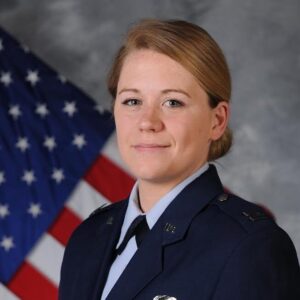
Trisha Penrod
Trisha Penrod is a former active-duty Air Force officer. As an Intelligence Officer, she led teams of analysts to apply advanced analytic skills to identify, assess, and report potential threats to U.S. forces.
Trisha attended the U.S. Air Force Academy and holds an MBA from Webster University. After receiving an honorable discharge in 2018, Trisha worked as a growth marketer and utilizes her analytic skills to help others accomplish their business goals.

